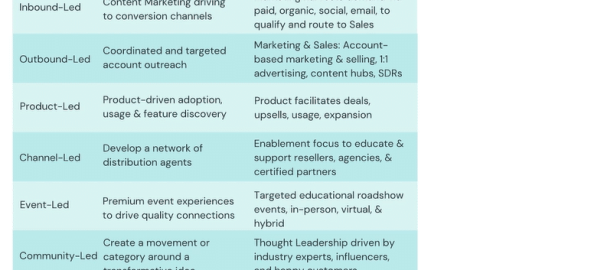Here are the metrics and tactics you need for a GTM strategy that can drive revenue and survive economic challenges.
Organizations need a go-to-market (GTM) strategy that uses the right metrics and mix of tactics or “motions” to drive revenue and survive economic challenges, said Sangram Vajre, CEO of analyst firm GTM Partners, in his second-day keynote at The MarTech Conference.
A go-to-market strategy is an organization’s plan to engage customers to buy a product or service and gain a competitive advantage. It can include new product launches, rebranding a product or introducing an existing product to a new market.
Here are five recommendations on how to get your GTM strategy off on the right foot.
1. Have a clear ROI story
Your customer, as well as anyone else interested in your company, will want some assurance about the health of your business. So have a clear ROI story to tell.
“Without an ROI story, your customers are running,” said Vajre. “Most companies’ decisions are being made by a CFO, so you’ve got to figure out how to [tell this story].”
2. Net revenue is your most important metric
It’s more important for a business to measure net revenue retention (NRR) than other revenue metrics like annual recurring revenue (ARR). That’s because this metric, which comes as a percentage, demonstrates a business can still grow, even when it isn’t acquiring new customers.
Vajre used the example of two companies: The first had lower annual revenue ($ 35 million) than the second ($ 50 million), but had a higher NRR of 120% versus 75%. Vajre prefers the first company.
“Even if the economy completely travels down, this company will be able to double its revenue because they have a higher NRR,” Vajre said.
“NRR [is] the number one metric that you need to focus on,” he said. “If you don’t have a goal assigned to it, find a way to get there.”
3. Experiment with multiple go-to-market motions
“Go-to-market motions are not just about inbound or outbound, they’re way more than that,” said Vajre.
In fact, there are seven go-to-market motions:

Organizations use three or four of these motions simultaneously.
“Each one takes time for you to understand what works,” he said. “Maybe product-led growth works for you. Or maybe it doesn’t because you are for enterprises and you need to have a different model. Whatever it is, make sure you have at least two or three models working at the same time in order to have that halo effect.”
4. Get on the road and meet your customers
It’s been difficult the last three years to meet in-person during the COVID-19 pandemic. During this time, marketers have developed new ways to meet, including through a series of smaller “roadshow” events.
For Vajre, there’s no replacement for meeting in-person.
“Get out of your zoom boxes and meet your customers,” said Vajre. “I have never lost a six-figure deal when I have met in-person with [a customer’s] executive team.”
5. Leaders must drive clarity, focus and alignment
Marketing leaders should also make clarity a priority. Vajre advocates for what he calls CAT: clarity, alignment and team.
“Get your teams together as often as you can,” Vajre said. “Be clear where you’re going, be aligned on who’s doing what and make sure that it’s a team effort where everybody knows what my role is in this bigger pie, in this bigger go-to-market operating system.”
The post 5 go-to-market recommendations for marketing leaders appeared first on MarTech.
(22)
Report Post







